From Zero to Hero - Jeep M715
Kaiser Jeep's 3/4-ton M715 was a disappointment new, but it's a cult classic now
09/23/2018


Space: The final frontier... If you can't recite the rest of the words to that legendary voiceover from a certain 1960s television series, you probably know someone who can. Star Trek: The Original Series debuted on NBC in 1966. Then the ill-fated space drama was taken off the air in 1969.'' Though launched at a time when Americans should've wanted to gaze out into the night sky for a little relief from the very real happenings on Earth, Star Trek was a Nielsen ratings black hole. Even the star of the show (and the voice of the aforementioned famous opening utterance), William Shatner, has said he thought the famous "five-year mission" would last only one season. Ironically, it tanked even as America gazed proudly upward at the success of the Apollo space program.
But then something funny happened to Star Trek on the way back to space dock. In syndication, the show achieved a cult-like popularity. There were conventions, lunchboxes, major motion pictures, spin-offs... suddenly Star Trek was a wildly popular franchise, and it remains relevant 42 years after the original show was taken off the air. A resounding success reaped from the seeds of failure. Was it simply an idea that was ahead of its time?
Right about the time that Star Trek's orbit was decaying, Kaiser Jeep was working on a successful failure of its own, the M715, meant to upgrade military hauling technology, if not boost it to the stars.
For almost 20 years following World War II and through the Korean War, U.S. troops had come to rely on the Dodge M37 for their light hauling tasks. The M37 first rolled off the line in 1951. It was a dependable warhorse, but hardly a major departure from the WC series trucks used in World War II or civilian WDX Power Wagons. The M37 was a ¾-ton 4x4 truck powered by the same ancient 230-cu.in. L-head straight-six engine that powered the WC, as well as many other Chrysler products. Standard-issue stuff also included a four-speed manual transmission, a two-speed transfer case, drum brakes and leaf springs fore and aft. Again, nothing exotic to be found here, but the M37's ruggedness is still legendary--even though engine failures weren't all that uncommon as the trucks aged, probably as a result of the almost continuous high RPM needed to keep the truck moving forward with short gears and little power.
By the late 1960s, though, the M37 was ripe for an honorable discharge and the military hoped to replace it with a vehicle that offered greater mobility and a larger load capacity. The result was actually two vehicles: the strange-but-true mid-engine M561 "Gamma Goat" and the Kaiser Jeep M715. The M561 was a high-mobility, amphibious 1.5-ton 6x6 truck powered by a Detroit Diesel engine. The KJ M715, however, was more of a direct replacement for the M37.
The plan was to use a civilian truck, or at least base the new military truck on civilian truck components in order to keep costs down; in later years, 11/4-ton military trucks would be virtually identical to their civilian counterparts. Unfortunately, for all its good intentions, circumstances conspired against the M715: Upon its introduction, it would have an immediate baptism by fire in Vietnam and in that crucible, it fell short of living up to the Jeep legend.
Based around a Jeep Gladiator light truck, the M715 rode on a Dana 60 front axle and Dana 70 rear axle coupled to a divorced NP200 transfer case (meaning that the transfer case was driven by a shaft rather than being connected directly to the transmission). The transmission was the heavy-duty Borg-Warner T98 with a compound low gear; the truck's final drive gear ratio was a goat-trail-climbing 5.87:1.
The M715's Achilles heel was its Tornado 230 overhead-cam straight-six powertrain. The Tornado was an idea far ahead of its time when development began in 1960, but by the time Kaiser Jeep installed it in the first M715s in 1967, it was an engine whose time had passed. The Tornado's reputation for dependability is still debated among enthusiasts today, but with 140hp and 210-lbs.ft. of torque, there's little doubt that the Tornado was overwhelmed by this 5,180-pound 4x4 military truck, even with ultra-deep gears.
The Tornado 230 was the brainchild of Willys engineer A.C. Sampietro, who was assigned the task of designing a new engine for the all-new 1962 Jeep Wagoneer. The lower end was based on the "Super Hurricane" 226-cu.in. straight-six with a hardened crankshaft. Its under-square 3.44x4.37 bore and stroke was suited for developing grunt just above idle, while the OHC head with its cross-flow design and hemispherical combustion chambers was ideal for building power through free breathing.
It was a good plan, but the early civilian versions suffered from oil leaks and oil consumption. There were also cam and cam bearing failures--likely due to low oil levels caused by the leaks. The problems were ironed out, but not before the engine had earned a reputation for being unreliable. It was replaced in the Wagoneer during 1965 with a 232-cu.in. pushrod straight-six engine that Kaiser Jeep purchased from AMC.
The Hurricane 230 continued as a production engine in Argentina, used in cars built by Kaiser's South American subsidiary, Industrias Kaiser Argentina. The Hurricane that appeared in the M715 was a vastly improved engine from the one that powered the earliest Jeep civilian trucks, but it still suffered reliability problems.
As a result of engine-related woes, build-quality issues and a general opinion that the truck was underpowered, the M715's service only lasted about nine years following its 1967 introduction. Its replacement, the Dodge 11/4-ton M880--a conventional fleetside full-size Dodge pickup-- arrived in 1976. It's been reported that Kaiser Jeep built 30,400 M715s for the military from 1967-'69.
It isn't known how many were destroyed--or simply left behind--during the Vietnam War. Many M715s remained at bases in the U.S., later to be auctioned off at government sales. Others were sold or simply given to other government agencies. Repurposed M715s were commonly used by fire departments as brush-fire fighters, outfitted with a water tank and pump in the bed, as our crisp-looking feature truck demonstrates.
These trucks are neither difficult nor expensive to obtain or restore. The grille and hood are Jeep Gladiator components, while doors and fenders from Jeep full-size pickups can be adapted to work. The M715's front fenders are standard Jeep items, but the openings are huge and circular to accommodate the military truck's 34-inch-tall 9x16 tires. The cab is basically a Gladiator or J-10 unit, but with a flat windshield and a canvas top, so a direct interchange between an M715 and a civilian Jeep pickup, while possible, isn't as straightforward as a casual observer would think.
The M715 standard pickup bed is very simply shaped, and repair panels aren't difficult to fabricate. These beds are fairly plentiful on the used market, as well. It's worth noting, too, that there were other versions of the M715 built, including an ambulance-bodied truck called the M725 and a utility-bodied truck called the M726.
What're these trucks worth? Fortunately for those who appreciate them, military trucks aren't muscle cars when it comes to value. (Perhaps because so many muscle car enthusiasts are ex-vets who prefer to own the vehicle they aspired to in their youths, not the vehicle Uncle Sam insisted that they drive for four or more years!) According to popular pricing guides, the low end is about $1,000, while the high end is $11,000. Poking around on the web and in back issues of Hemmings Motor News recently revealed many nice, though not perfect, examples for sale in the $5,000 to $10,000 range.
Trucks that have had engine swaps are common--predictably, the small-block Chevrolet is a popular transplant. AMC V-8s and, of course, GM as well as Cummins diesels are also a hot swap. Because the transmission, axles and transfer case are all sourced from separate vendors and were used in other 4x4s, rebuilding or replacing them is not difficult.
Driving these trucks today can be an eye- (and ear-) opening experience. Without any sound deadening material and with that old Jeep build quality, they are noisy, to say the least. Though they're reputed to have a top speed of 60 MPH, driving an M715 at that speed on bias-ply tires with manual steering (with which they were all equipped) would take the courage of a Medal of Honor winner.
So, all of that said, you'd figure that these trucks, given their generally lousy reputation, would be shunned by anyone other than scrap-metal dealers today. Wrong. When it comes to a cult following, James T. Kirk and his cohorts have nothing on the M715. Recreational off-roaders love these trucks, as do military vehicle enthusiasts. There are several great websites devoted to the M715, the most widely cited of which is www.m715zone.com, and they are a favorite feature subject of the popular off-road truck magazines.
But wait, there's more: The M715 has even spawned overseas imitators. Korean automaker KIA manufactures a diesel-powered M715 look-alike for the Korean military, reportedly licensed by the U.S. government. The truck is called KM 450 and bears a striking resemblance to the M715, the primary differences being the shape of the wheel wells and the grille. For power, it relies on a 139hp 3.9-liter four-cylinder diesel connected to a five-speed transmission.
Nor has the Chrysler Corporation completely forsaken the M715. Last year, Jeep and Mopar Parts showed off a wild off-road pickup concept vehicle based on a Jeep Wrangler, sporting an M715-inspired front-end treatment. It was dubbed the Jeep Nukizer (Get it? "New Kaiser") M715, and Jeep enthusiasts went nuts over it.
Hmm... a '60s flop that's now a resounding success? Sound familiar? Better beam an M715 into your garage before their popularity hits the outer limits.
In Corvette parlance, Z06 is shorthand for race-car-level performance wrapped in a street-legal package. The original Z06 package, circa-’63, was a backdoor entrance to the best competition gear Chevrolet had to offer. It wasn’t meant for privateer racers, not the average enthusiast, and was priced accordingly, adding about $1,800 to the base price of a $4,000 Sting Ray.
At the dawn of the 21st century, Z06 Corvettes reemerged as off-the-showroom floor, road-course weapons or the most capable corner-carving street cars, you’d ever set foot in.
Fortunately, after the 2001-’04 C5 Z06, the package didn’t go on hiatus for another 30-plus years as it had before. Instead, the 2006-’13 C6 Z06 raised the stakes higher. It was built on an all-aluminum platform with a lightweight magnesium engine cradle. Bundled in that cradle was a howling, thinly veiled race engine—the LS7 427. The next generation Z06, that arrived with the C7 Corvette, was a little more civilized. It used supercharging to boost power, an eight-speed automatic transmission was available, and a convertible was offered. This was the most popular version of the Z06 ever, selling nearly 40,000 copies in its five-model-year run. It also was the subject of a couple class action lawsuits. The first alleged that some 2015-’17 Z06s would overheat during track sessions, triggering the computer’s limp mode and sending the cars limping into the pits to cool off. A second lawsuit alleged that 2015-present Z06 (and 2017-present Grand Sport) alloy rims could warp, bend or crack leading to punctured tires, air leaks or blowouts.
For 2023, Chevrolet built the most technologically advanced and exotic Z06 to date. Starting with the mid-engine C8, engineers added the all-new LT6 “Gemini” engine: a 333-cu.in. (5.5-liter) flat-plane V-8 with dual-overhead cams and four valves per cylinder. The LT6 used modern race bits like: a two-piece aluminum block; forged titanium connecting rods; lightweight, short-skirt pistons; dry-sump oiling; titanium intake valves; sodium-filled, stainless exhaust valves; direct fuel-injection; and an active intake. All in, the engine made more than two horsepower per cubic inch at 8,400 rpm.
With the EV era upon us, what does the future hold in store for the legendary Z06? Hard to say, so instead let’s take a look back at the five amazing editions offered from 1963 to the present. Are you one of the Z06 faithful? Send photos and the backstory behind the corner-carving Corvette in your garage to mmcnessor@hemmings.com.
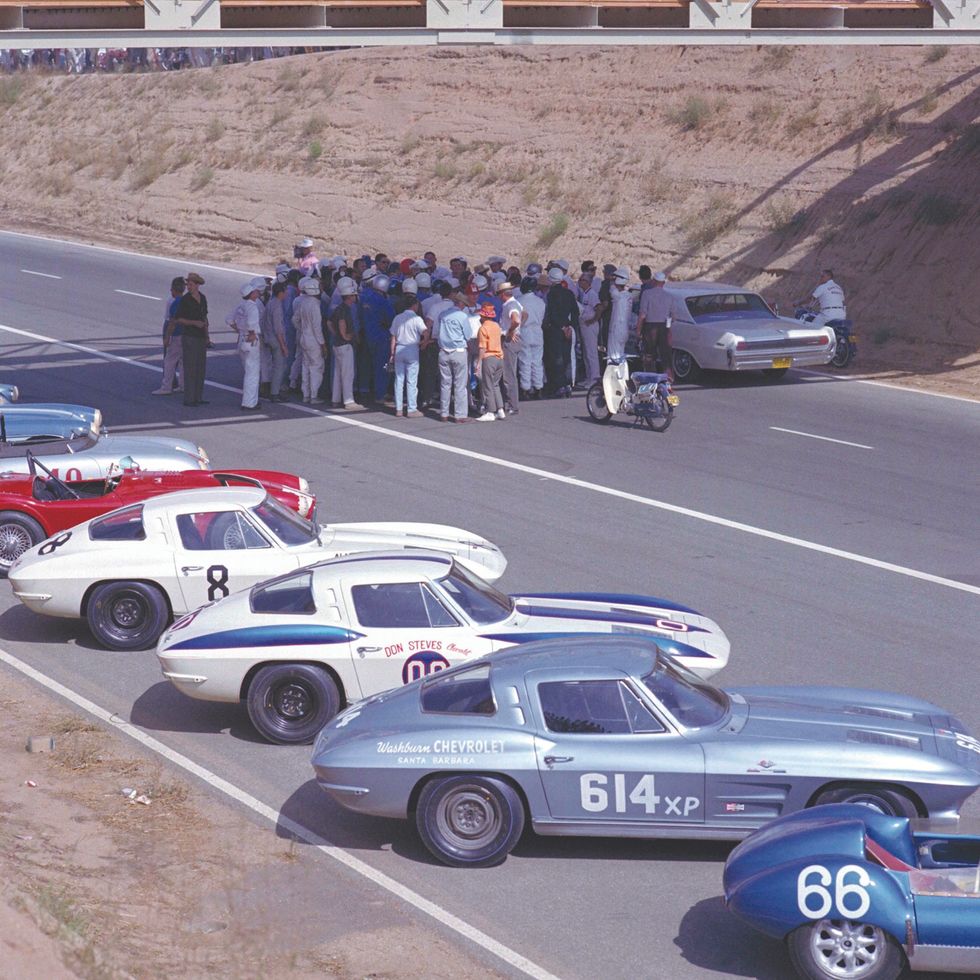
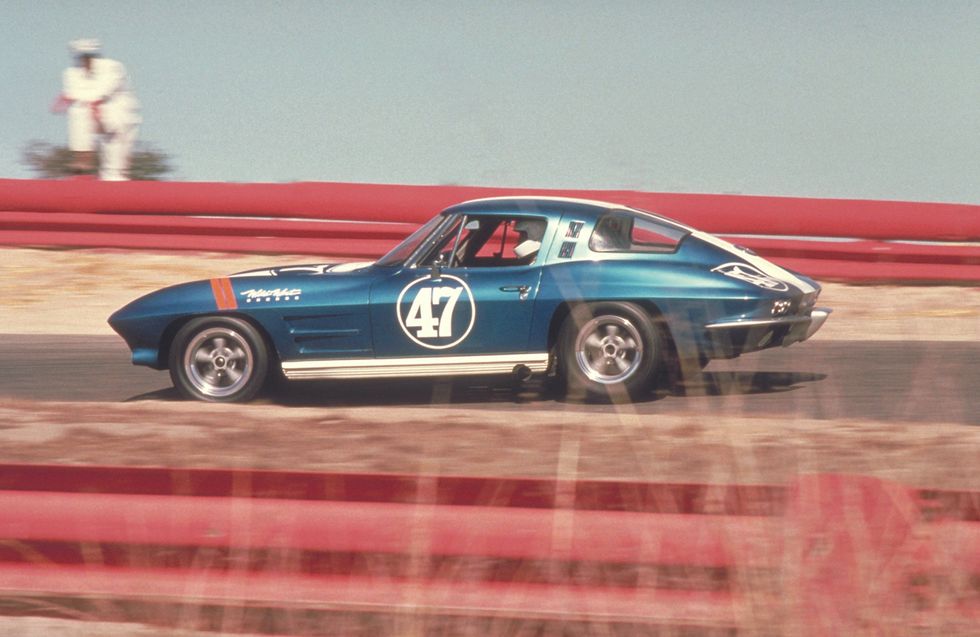
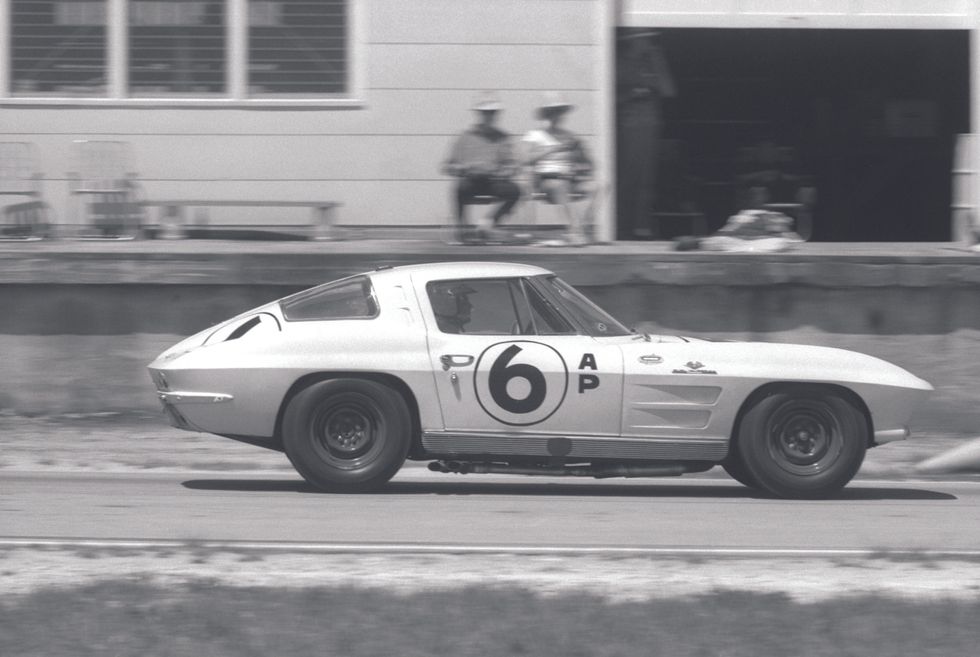


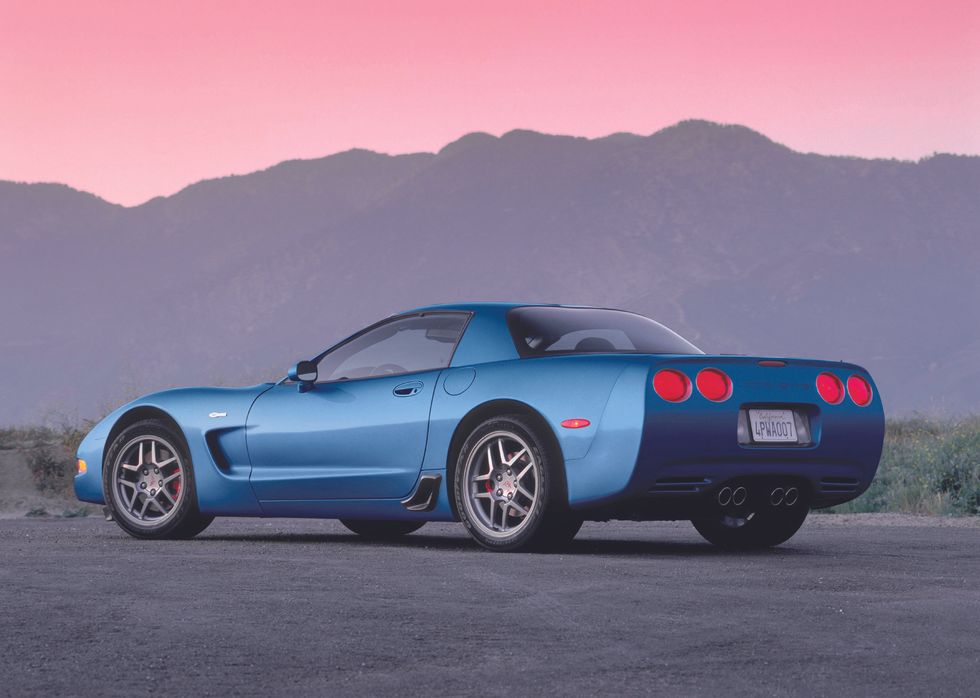
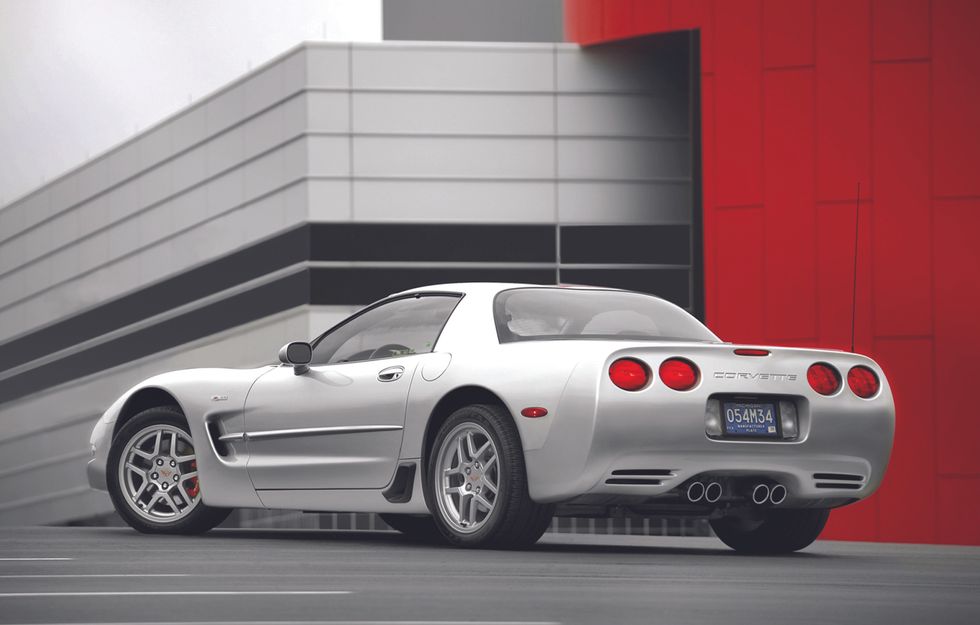

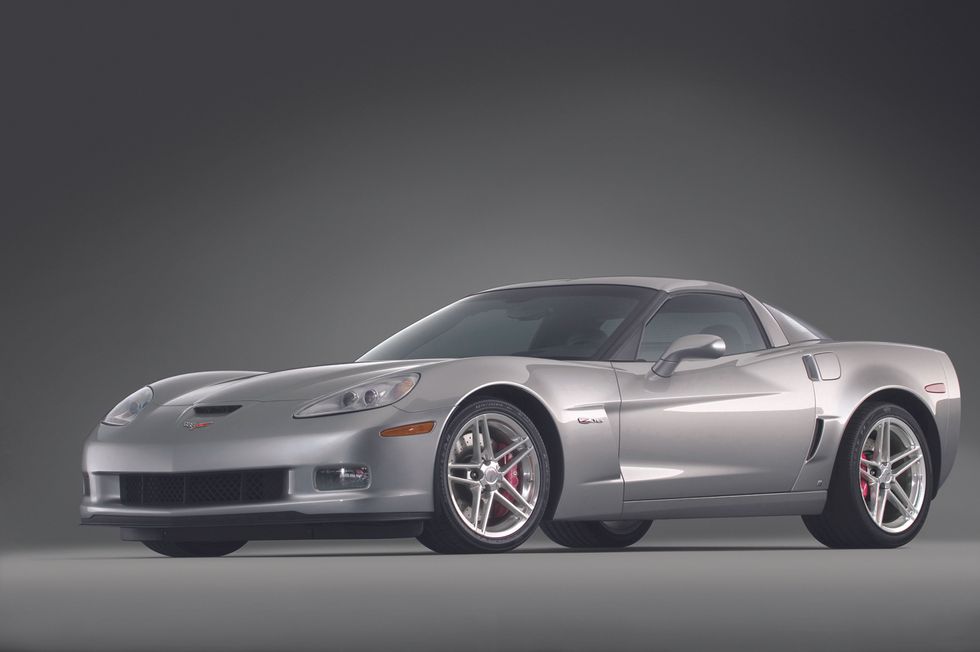
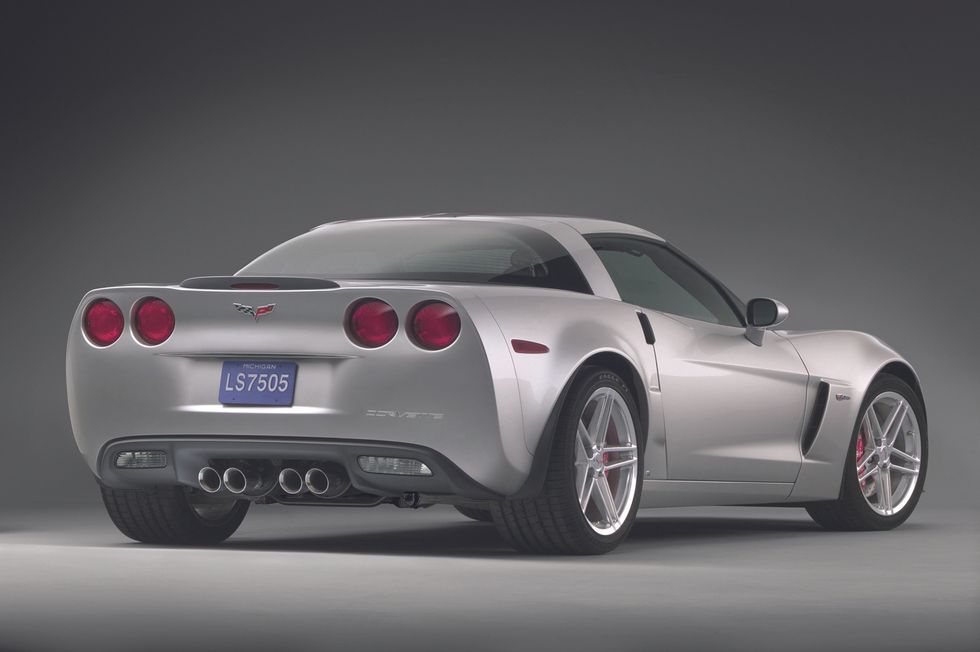

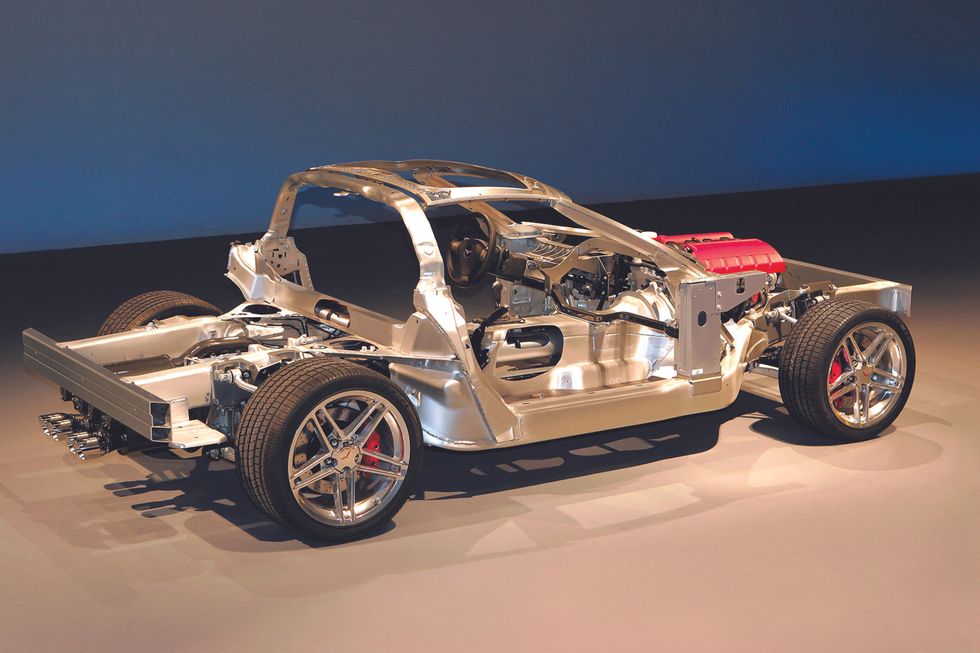
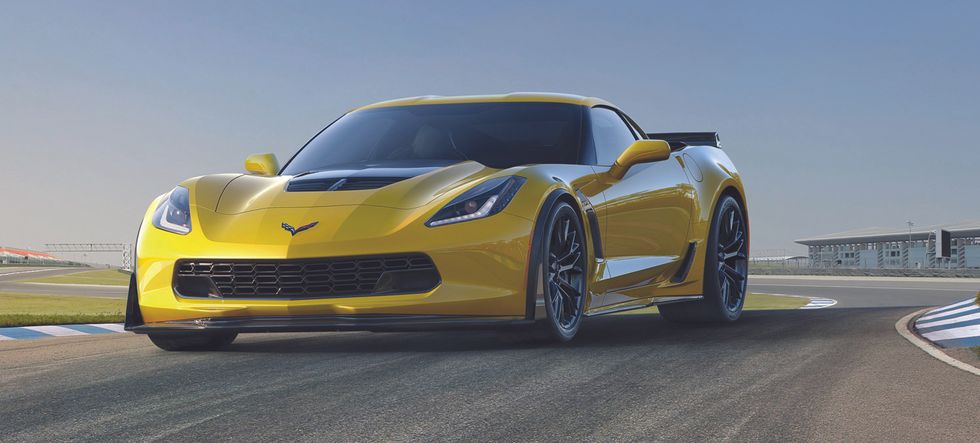


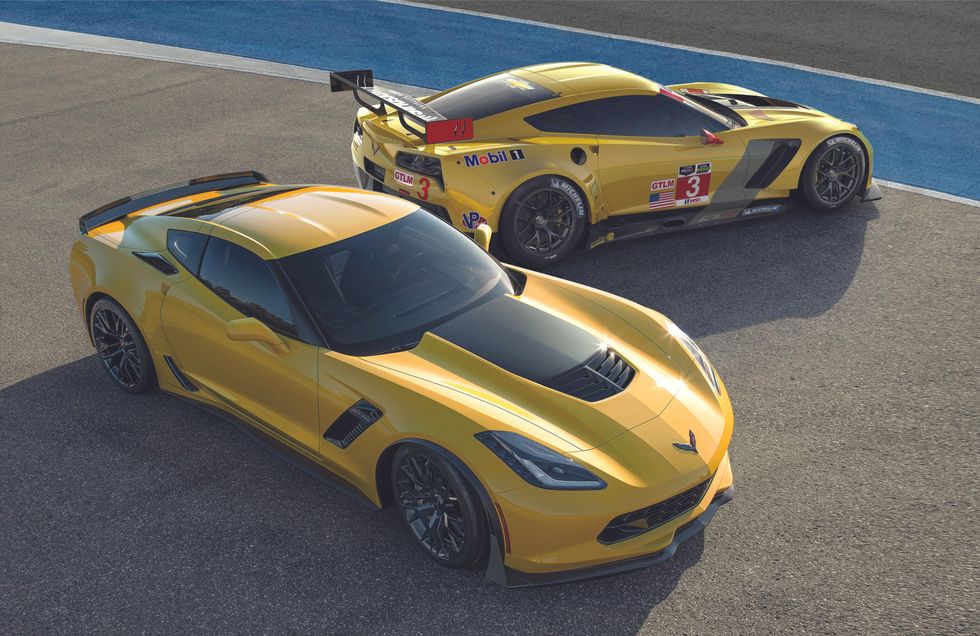
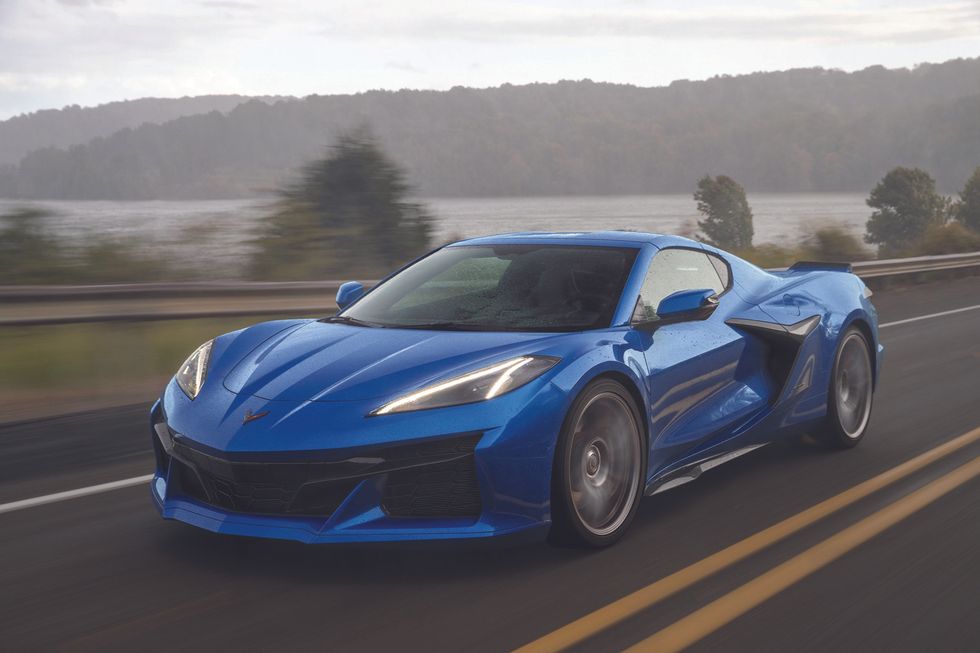

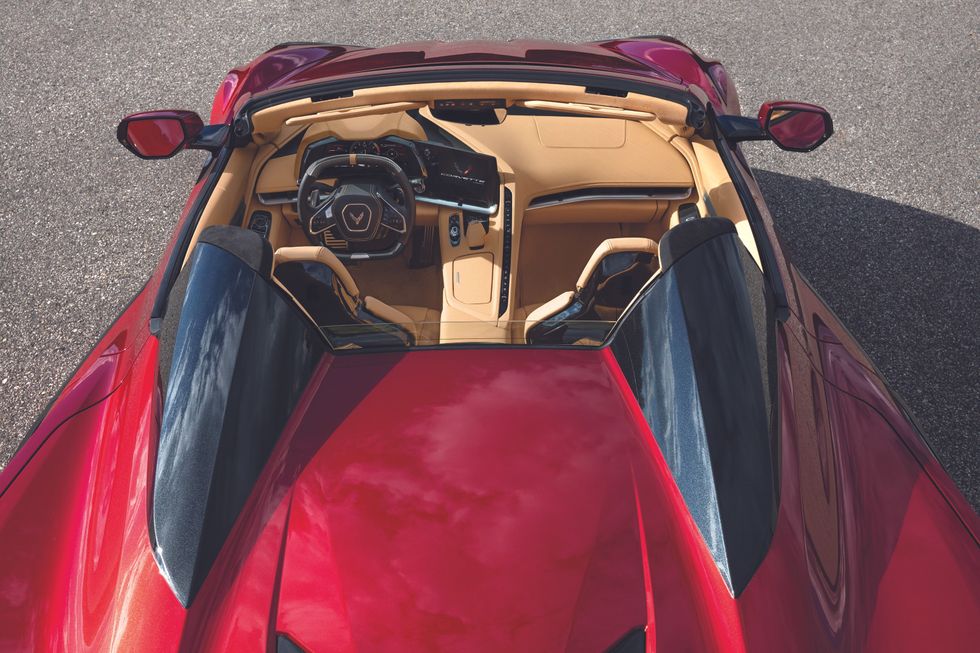
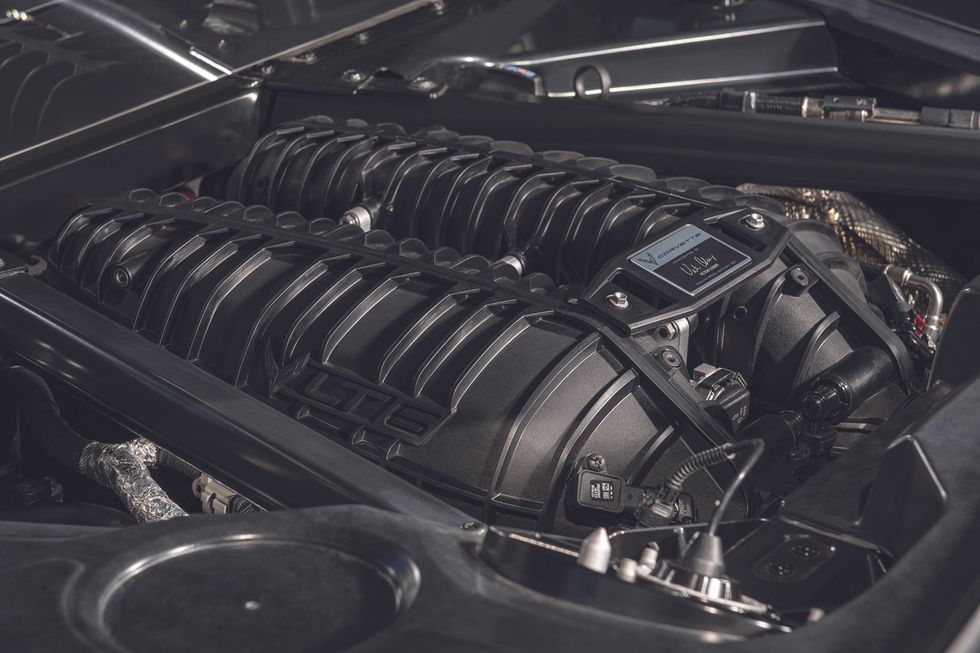

Old Air Products • 817-531-2665 • oldairproducts.com • $265
Electronic slide controls are now available for cars with Old Air Products’ Hurricane A/C, Heat and Defrost systems. The control has a three-speed blower switch and two slides to activate the variable defrost and heater valve operation. A pushbutton A/C switch is also nestled in place to operate the compressor and blend A/C and heat for dehumidified defrost control. Each unit features a faceplate control, wiring harness and electronic bypass heater valve. The controls are for use with the Hurricane 1100, 2100 or 3100 series A/C heat and defrost systems and they are available in either silver or black. Look up p/n 45-0130A (silver) and 45-0130B (black) for more information.

Coker Tire • 866-516-3215 • cokertire.com • $369/each
These new tires have the appearance and sizing of vintage bias plies, but they incorporate modern radial construction. Perfect for the road or show, they have a 2.75-inch whitewall emblazoned into the tire during initial construction for high-quality and durability. These tires are DOT approved and thoroughly tested for durability, while their old-style tread patterns add to the vintage look. Sizes and profiles are available for cars and vehicles ranging from the 1920s to the 1970s—inner tubes are required on some OEM and reproduction wire wheels. Ask about p/n 700303 for more details.

Bruce Horkey’s Wood and Parts • 507-831-5625 • horkeyswoodandparts.com • $93/each
New stake pockets are now available for Dodge “low-side” pickups built from 1939-’56. These new parts will make it easier to repair your pickup box and will fit the 116-inch wheelbase 1/2-ton as well as the 120-inch wheelbase 3/4- and 1-ton pickups. Each pocket is manufactured from new tooling, using 16-gauge steel, die stamped to shape, and laser trimmed to size. These are proper replacements for your damaged or rusted bed stake pockets. In addition, the rear crossmember brace is included.

Ames Performance Engineering • 800-421-2637 • amesperf.com • $389
Install a factory-appearing radio with modern conveniences into your 1967-’68 Pontiac Firebird with these RetroSound radios. They feature classic pushbuttons, replica knobs, period-correct bezels and faceplates while allowing you to access Bluetooth connections, HD Radio, Sirius XM and more. Up to 30 presets are available and they come with two USB ports. A hassle-free factory-like fit is possible using the special mounting brackets that can be adjusted for proper depth and width for a correct fit. Walnut face plates are also available. Inquire about p/n FM130BA for more details.
Prices shown are presumed accurate at the time of printing. Please confirm with seller prior to purchase.